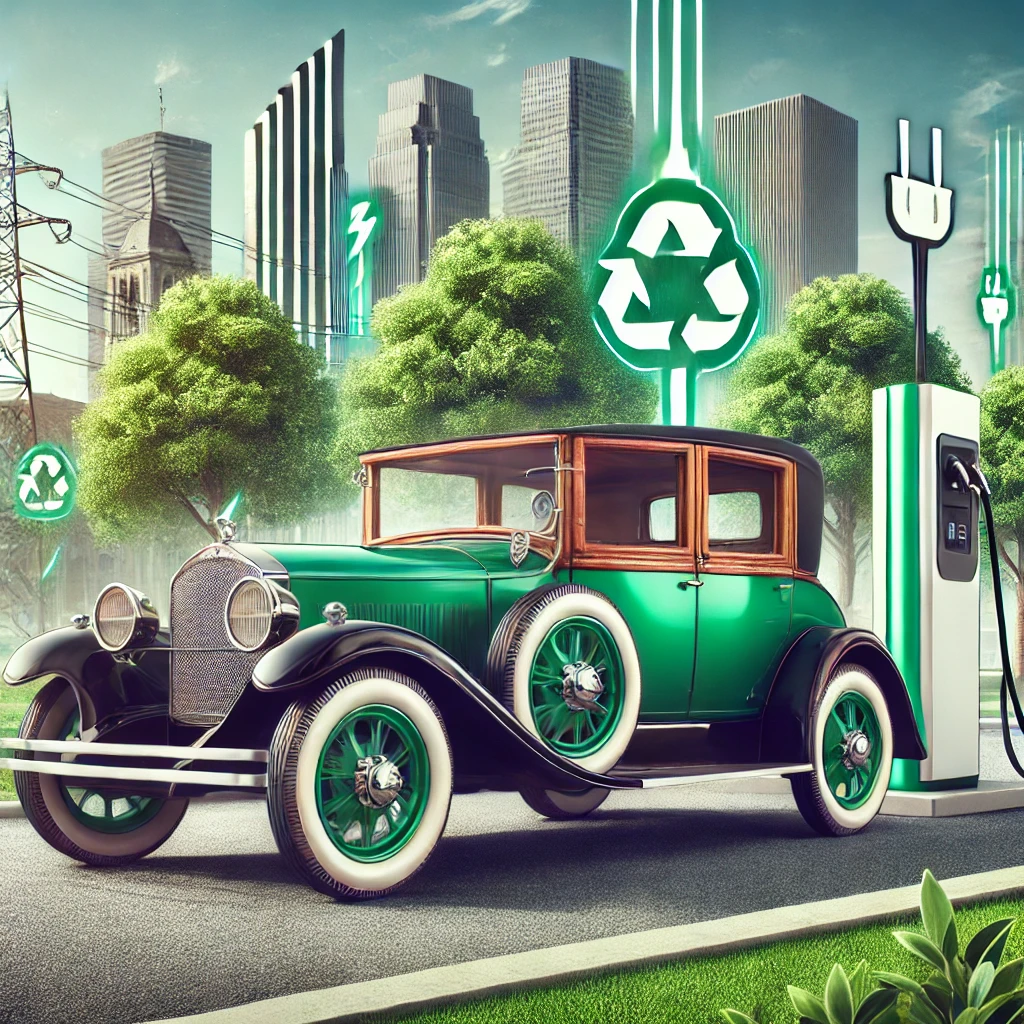The Electric Revolution Meets Classic Car Culture
As the world shifts towards sustainable energy, vintage car enthusiasts are embracing an unexpected trend: the restoration and electrification of classic cars. The marriage of iconic automotive design and modern electric technology is not only breathing new life into old vehicles but also offering a glimpse into the future of eco-conscious transportation. In this article, we'll explore the growing movement to convert vintage cars into electric vehicles (EVs), the challenges and benefits of such transformations, and how this trend is shaping the future of car restoration.
Why Restore Vintage Cars as EVs?
The global push for electric vehicles has gained unprecedented momentum, and vintage car enthusiasts are seeing an opportunity to bring classic models into the fold. From iconic muscle cars to elegant European roadsters, these cars are symbols of a bygone era, full of personality and craftsmanship. Restoring them as EVs allows owners to maintain the timeless design and history while upgrading their technology for a cleaner, greener world.
Electric conversions make vintage cars more environmentally friendly by eliminating the carbon emissions produced by traditional internal combustion engines. For car lovers who appreciate the aesthetic appeal of classic vehicles but want to reduce their carbon footprint, this is an ideal solution. It’s a blend of nostalgia and progress, preserving the heritage of the past while preparing for the future.
Challenges of Converting Vintage Cars to Electric
While the idea of electrifying classic cars is exciting, it's not without its challenges. One major hurdle is the availability of parts. Since vintage cars are often rare, sourcing the appropriate components to maintain the authenticity of the vehicle while integrating modern EV technology can be complex and costly. Furthermore, retrofitting electric powertrains into a chassis designed for gasoline engines requires significant engineering expertise.
Another issue is the weight and size of batteries. Vintage cars, especially compact models, may not have enough space to accommodate modern battery systems without compromising their original design or performance. Balancing these technical limitations with the desire to keep the car’s iconic look intact is a delicate process.
The Green Future of Vintage Cars
Despite the challenges, the market for vintage electric conversions is booming. Companies specializing in this field are emerging around the globe, offering services to convert classic cars into fully functioning electric vehicles. Enthusiasts can now have their dream car from the 1960s or 70s, but with a quiet, clean electric motor that’s fit for the 21st century.
This movement aligns with the broader shift towards sustainability in the automotive industry. As governments push for stricter emissions regulations and the phase-out of gas-powered vehicles, classic car lovers are finding that converting to electric allows them to keep their beloved vehicles on the road without sacrificing their values or facing future restrictions.
The Impact on Car Culture
The resurgence of classic electric cars is also reshaping the broader car culture. Traditionally, the rumble of a powerful V8 engine has been a hallmark of vintage cars, but the silent hum of an electric motor is beginning to redefine what it means to own and drive a classic. Some purists may resist the shift, but others are embracing the blend of old and new, seeing electric conversions as a way to future-proof their collections while staying true to their passion for automotive history.
Car shows and events that once celebrated raw horsepower are now welcoming EV conversions, demonstrating that the classic car community is evolving alongside the rest of the world. With the appeal of clean energy and modern technology, the line between traditional gas-powered vehicles and electric cars is becoming increasingly blurred, fostering a new era of innovation and creativity.
Notable Vintage Electric Car Conversions
Several high-profile conversions have made headlines in recent years, showing the potential of this trend. For instance, the electric conversion of a 1967 Ford Mustang brought a fresh take on the American muscle car, while a converted Porsche 911 Targa proved that performance and style could coexist with sustainability. These examples are just the tip of the iceberg, as more and more companies and individuals undertake the challenge of turning vintage classics into green machines.
Another example is the Jaguar E-Type Zero, famously driven by Prince Harry and Meghan Markle during their wedding day in 2018. This electric version of the iconic British sports car demonstrated to the world that vintage vehicles could be eco-friendly and modern without losing their charm.
These conversions are not just engineering feats—they represent the beginning of a broader movement. As more people see the potential of electrifying their favorite vintage cars, we may soon witness a significant shift in how classic vehicles are viewed and used in the future.


